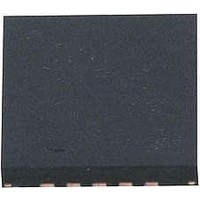AT42QT1070-MMH Atmel, AT42QT1070-MMH Datasheet - Page 39

AT42QT1070-MMH
Manufacturer Part Number
AT42QT1070-MMH
Description
IC TOUCH SENSOR 7KEY 20-VQFN
Manufacturer
Atmel
Type
Capacitiver
Specifications of AT42QT1070-MMH
Number Of Inputs/keys
7 Key (Comms), 5 Key (Standalone)
Data Interface
I²C
Voltage Reference
Internal
Voltage - Supply
1.8 V ~ 5.5 V
Operating Temperature
-40°C ~ 85°C
Mounting Type
Surface Mount
Package / Case
20-VFQFN Exposed Pad
Supply Voltage
1.8 V to 5.5 V
Dimensions
3 mm L x 3 mm W x 0.8 mm H
Temperature Range
- 40 C to + 85 C
Termination Style
SMD/SMT
Lead Free Status / RoHS Status
Lead free / RoHS Compliant
Current - Supply
-
Resolution (bits)
-
Touch Panel Interface
-
Data Rate/sampling Rate (sps, Bps)
-
Lead Free Status / Rohs Status
Lead free / RoHS Compliant
Available stocks
Company
Part Number
Manufacturer
Quantity
Price
Company:
Part Number:
AT42QT1070-MMH QS529
Manufacturer:
Atmel
Quantity:
9 390
4.2.4
4.2.4.1
4.2.4.2
Touch Sensors Design Guide
Interconnection
X Routing
Y Routing
X routing is fairly trivial as long as RC time constant rules are observed. Nearby foreign signals that have
large kHz frequency
the charge transfer. Examples of circuits to consider include D-class amplifier signals, LCD or LED drive
signals.
X routing is not touch sensitive, and so X traces can be routed with ease on any layer of a PCB, including
the side nearest to touch. However, X routing must also take the Y routing into account.
Y routing must be more carefully considered, due to Cp build-up and the need to avoid an effect called
false key detection. Y routing is only very weakly touch sensitive, so it is good practice to run Y traces on
a layer that is far from touch.
The first factor, Cp build-up, is easily dealt with by avoiding routing Y traces over or close to ground
planes (or other power planes).
The second factor, false key detection, can occur wherever there is an interaction of the Y traces with the
X traces. Remember that anywhere where X and Y get close (less than 10 mm), and the field between
them is allowed to be influenced by touch, you have a potential key or at least a touch sensitive zone that
you do not expect (see
Figure 4-8.
1. High kHz to hundreds of kHz in particular.
Potential False Key
(1)
Potential False
Key Detection
switching transients should be routed well away from X traces as they can disturb
Figure
X Trace
4-8).
Y Trace
Mutual-capacitance Zero-dimensional Sensors
Overlying Panel
10620D–AT42–04/09
4-7













